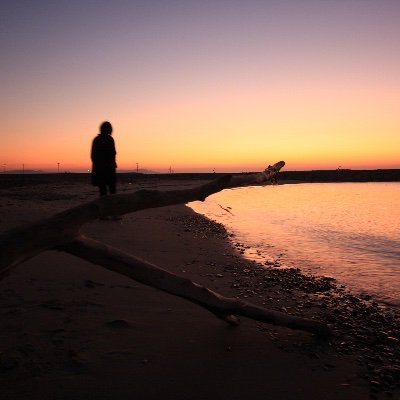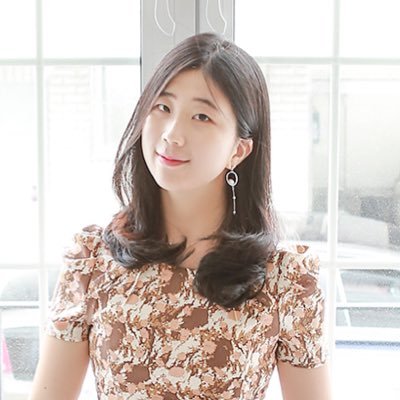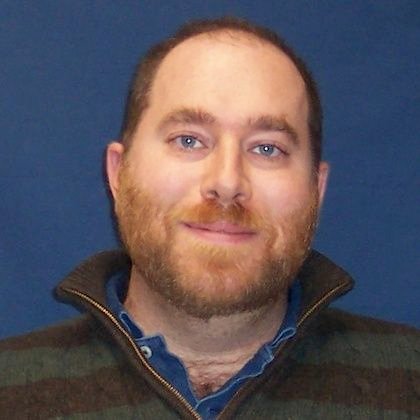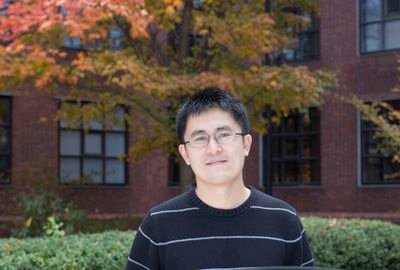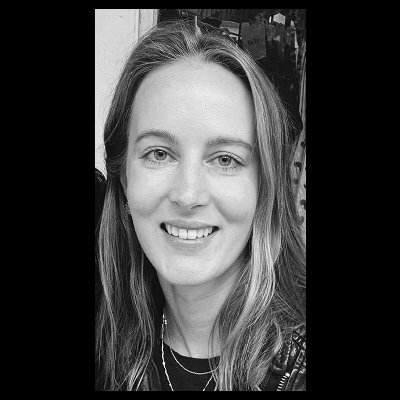
Katrin Franke
@kfrankelab
Followers
2K
Following
5K
Media
65
Statuses
2K
Senior Scientist Neuroscience & AI • @StanfordMed • https://t.co/4GWyR7iUEO • https://t.co/oHbDmfP0li
Stanford, CA, US
Joined August 2019
So excited this is out @Nature 🎉 Pupil dilation with internal brain state rapidly shifts neural feature/color selectivity in mouse visual cortex by switching between rod&cone photoreceptors👁️🧠 https://t.co/RBn6J1E6RM Shared work with @KonstantinWille, @AToliasLab & @sinzlab
24
161
742
Rumor has it Mother Nature might be the best AI engineer🌱💡 Come see why at Brass Bear Brewing, Nov 13 @ 6pm. With Dr. Fatih Dinc, we’ll dive into how brains, bots, and biology compute with intelligence
0
11
23
Interested in Topological Deep Learning?🍩 20 days is more than enough to participate in the Topological Deep Learning challenge 2025! Details (including prizes) below 🌟 @geometric_intel @UCSBengineering @ucsantabarbara @EPFL @mathildepapillo @gbg1441 @lev_telyatnikov
🚨 20 DAYS LEFT to submit to the Topological Deep Learning Challenge! TopoBench just hit 200 stars 🌟, and we're looking forward to seeing your submissions before the deadline. This year's challenge has multiple ways to contribute and prizes. All details: https://t.co/JDRgKVmOAH
0
13
22
🕳️🐇Into the Rabbit Hull – Part I (Part II tomorrow) An interpretability deep dive into DINOv2, one of vision’s most important foundation models. And today is Part I, buckle up, we're exploring some of its most charming features.
10
120
642
Our review is out 🎉 We discuss how neural computations in the retina shape behavior, continuing the top-down tradition of Lettvin et al.'s classic bug-detector neurons Check it out 👀 https://t.co/V5jdRMUR6S
@AnnualReviews w/ coauthors @AnnaIntegrated & @SerenaRiccitel2
annualreviews.org
Since Lettvin and colleagues’ seminal discovery of bug detector neurons in the frog retina, understanding how retinal circuits support behavioral demands has been a central goal of visual neuroscie...
The most recent volume of the Annual Review of Vision Science is online. Check out the table of contents https://t.co/86S0UA6ZRd
0
4
16
The most recent volume of the Annual Review of Vision Science is online. Check out the table of contents https://t.co/86S0UA6ZRd
0
1
6
Teaching a new course @Stanford this quarter on explainable AI, motivated by neuroscience. I have curated a paper list 4 pages long (link in comment). What are your favorite papers on explainable AI/mechanistic interpretability that I am missing? Please comment or DM. thanks!
51
246
2K
Nature A compressed hierarchy for visual form processing in the tree shrew https://t.co/DDilO8eALp
nature.com
Nature - Tree shrews show a primate-like hierarchical organization in their visual pathway and object decoding accuracy, along with strongly face-selective cells, demonstrating how core...
0
16
64
HAVE YOU CHECKED THIS OUT? 18 of the world's top women neuroscientists provide insights and advice for the next generation of female leaders in the field! Includes @KiaNobre @SMolholm @carmensandi10
@FENSorg @WileyNeuro #WomenEmpowerment #Womeninscience
https://t.co/c8qiaKq8Rr
onlinelibrary.wiley.com
Click on the title to browse this issue
0
14
25
スタンフォード大学の研究チームが、新しい世界モデルを発表しています。 AIが自分で動画を観察して「もしこの物体がこう動いたらどうなるか」という仮想的な状況を想像することで、物体の動きや奥行き、物体の境界線などを自動的に理解するシステムを開発したそうです。
3
119
556
Excited to share our new work on the large-scale organization of the tree shrew visual system, led by @FrankLanfranchi with @joe_wekselblatt & Daniel Wagenaar! We trace the evolutionary roots of the primate ventral visual pathway—revealing surprises like face cells in a
The primate visual system is a marvel of nature, inspiring the convnet. But how did it evolve? Do all highly visual mammals possess a ‘ventral stream’—a hierarchy of brain areas with increasing selectivity for complex forms? In our new study, we tackled these questions using
3
28
171
The primate visual system is a marvel of nature, inspiring the convnet. But how did it evolve? Do all highly visual mammals possess a ‘ventral stream’—a hierarchy of brain areas with increasing selectivity for complex forms? In our new study, we tackled these questions using
2
33
153
We believe what we see, but we also see what we believe. This is why we see illusions - our prior knowledge of the sensory world tricks us into seeing things that aren't there. How does this happen in the brain? In this study... https://t.co/gx6aLyfZzk
nature.com
Nature Neuroscience - Neurons that respond emergently to illusory contours drive pattern completion in V1. Pattern completion in lower cortical areas may therefore mediate perceptual inference by...
6
42
180
1/ A good world model should be promptable like an LLM, offering flexible control and zero-shot answers to many questions. Language models have benefited greatly from this fact, but it's been slow to come to vision. We introduce PSI: a path to truly interactive visual world
3
34
128
Here is our best thinking about how to make world models. I would apologize for it being a massive 40-page behemoth, but it's worth reading.
1/ A good world model should be promptable like an LLM, offering flexible control and zero-shot answers to many questions. Language models have benefited greatly from this fact, but it's been slow to come to vision. We introduce PSI: a path to truly interactive visual world
5
41
219
Using AI to advance our understanding of fundamental physics is the dream. Excited to see our latest AI model 'Deep Loop Shaping' help @LIGO and @Caltech detect the gravitational waves of intermediate-mass black holes better! Published in @ScienceMagazine
We’re helping to unlock the mysteries of the universe with AI. 🌌 Our novel Deep Loop Shaping method published in @ScienceMagazine could help astronomers observe more events like collisions and mergers of black holes in greater detail, and gather more data about rare space
74
139
1K
📢 #NeurReps2025 UPDATE While we are beginning to set up the reviewing process, we're accepting late submissions until September 4th! 📅 Get your papers in now to be part of this exciting #NeurIPS2025 workshop on neural representations. Submit at
neurreps.org
Call for Papers
0
6
31
Cutting-edge AI4Science research with the ocean at your doorstep? I'm interested👓🥼 At UCSB, we build AI methods that accelerate discovery — from neuroscience to physics to healthcare. Join @ai_ucsb and help shape the future of AI4Science!
We are recruiting postdocs @ai_ucsb ! w @YaoQin_UCSB @HaewonJeong00 You want to lead the future of AI4Science? Apply to UCSB Real AI For Science Initiative🌟 Deadline: Sept 15, 2025. Competitive salary. This is the view you'll have from... your desk! By @AdeleMyersPhD
0
4
24
We are recruiting postdocs @ai_ucsb ! w @YaoQin_UCSB @HaewonJeong00 You want to lead the future of AI4Science? Apply to UCSB Real AI For Science Initiative🌟 Deadline: Sept 15, 2025. Competitive salary. This is the view you'll have from... your desk! By @AdeleMyersPhD
7
38
190
Discover our research: https://t.co/5g0jN7JbUw Apply: Send CV + coverletter 📩to ai@ece.ucsb.edu 🕐by Sept 15, 2025 to receive full consideration. We hope to hear from you! @ucsantabarbara @ucsbcs @ucsbece @UCSBengineering @geometric_intel
@HaewonJeong00 @YaoQin_UCSB
1
8
24
A @NeuroCellPress paper led by Kushal @UCBerkeley, Nicole&Victoria @UCSF in full collaboration with @shekharlab, Molecular and spatial analysis of ganglion cells on retinal flatmounts identifies perivascular neurons resilient to glaucoma https://t.co/QjeNMbQwWZ
#retina #MERFISH
Online now: Molecular and spatial analysis of ganglion cells on retinal flatmounts identifies perivascular neurons resilient to glaucoma https://t.co/RddHnv3hn6
1
15
66








